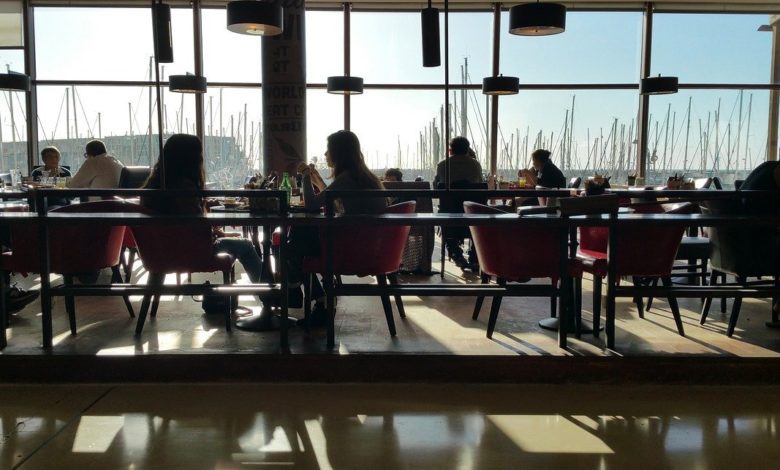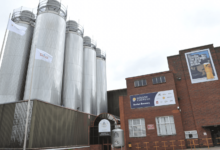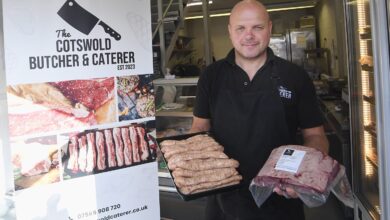Can catering SMEs weather the supply storm?
The catering landscape has undergone hardships due to the supply chain crisis, even for established chains, and so it begs the question how are SMEs coping and what advice can be given to help them adapt

Using the words of Nando’s, restaurants have had “a bit of a mare” recently amid an increase in supply chain shortages. Earlier this year, the chain had to temporarily shut around 50 UK outlets, with its signature peri peri chicken stripped from the menu. As well as chicken being unattainable, staff were too; with the brand forced to lend members of its restaurant workforce to help-out its suppliers. KFC also felt the impact of supply shortages, describing the situation as “not ideal” – although not disclosing which of its foods were affected.
With a greater cash flow and a “sturdier” business, managed pubs and restaurants may be built to absorb the supply chain issues more easily, according to the Institute for Government think tank, however the CGA identifies that this may not be the case for small and medium sized enterprises (SMEs) in the sector.
“The smaller end of the market has been hit much more severely than the larger side of the market. Between March 2020 and September 2021, the managed market has lost, in net, 5% of sites, whilst the independent free trade – often family run, local businesses – has lost 9.4%, which is almost twice as many losses,” says Ted Mulcauley, senior insight consultant at CGA.
CGA and AlixPartner’s ‘Market Recovery Monitor’, released in October 2021, shows that nearly 1000 pubs and restaurants have been lost since the July this year – to put that into perspective, 100 closures every week, or indeed 16 closures a day. A staggering 701 out of the total are made up of independent sites, which begs the questions, why, how and what: why have smaller businesses been potentially worsley affected than larger ones, how have they been affected and what actions can be taken to prevent them from closing.
According to Mulcauley, “the reasons are obvious”. He says: “managed groups are able to source funding more easily, they are more sturdy businesses because of their scale, they are able to get bank loans more easily and some have sought external investment – by definition, independent, often family-owned businesses just cannot do that in the same way.”
So in what ways have small and medium businesses been affected by supply chain issues? Megan Bowles, supervisor at the Wingrove House Ltd , says the group has “struggled to get hold of stock on a weekly basis,” she continues, “it is always something different. For ages we couldn’t get any straws and the chefs have struggled to get certain ingredients for dishes so we have had to change the recipes, sometimes on a daily basis.
“Over the summer we couldn’t get hold of beer and gas which was quite a big issue because we lost out on the rush of summer customers.”
Bowles has worked in the hospitality industry for three years and in this time she has become well versed in the sector. She began her career at The Yew Tree, an independent pub in the South East of England and in two years worked her way up to be part of the supervisory team at the Beach Deck, one of two restaurants in the Wingrove House Ltd Group. Bowles says throughout these three years she has “never experienced anything like this”. She stresses: Iit has affected the whole chain and I feel all the businesses locally. For a couple of weeks everything could be fine and we could get hold of all the supplies that we need and then in the next month we’d struggle to get things or they are extremely low in stock.”
According to the CGA Business Confidence survey in partnership with Fourth, nine out of 10 businesses are experiencing reduced or unavailable products from suppliers; eight out of 10 are experiencing products not turning up and the same number are experiencing delays in deliveries and higher costs. “Essentially it is just compounding problems, upon problems, upon problems,” Mulcauley explains.
With suppliers having to naturally increase their prices and the Bank of England estimating inflation at 5% before spring 2022, smaller businesses will have to “pass on those costs to consumers,” according to Mulcauley. “If price rises continue, not only will they be forced to pass on those costs, in reality, if all your main competitors are raising their prices, you are more likely to yourself.”
However, it may be that a number of restaurants, to some extent, have independently remedied the supply issues they are facing. “The biggest remedies would be communicating with customers and changing the ingredients in the dishes to be able to keep serving them,” says Bowles. Mulcauley agrees adding that “agility within menus is important, how quickly can you change up your menu? How can you make sure your teams are able to adapt to that? And is there any type of training that you need to put in place?”
Asking such questions could help position SMEs in a better-abled position to maintain standards, an issue Bowles identifies within the company. “Not having a straw sounds really simple but if someone has got a child or someone disabled comes in and they need a straw then we can’t cater for them in the way that we usually would,” says Bowles.
“Building up stock in a run to Christmas would be advisable; getting in extra barrels and products as early as possible is key,” advises Ridley. However Mulcauley says that at a certain point it may already be too late to be a viable solution. “My understanding is that a lot of businesses tend to start stocking up for Christmas in September (or fairly early), however if they haven’t been able to do that, are they already playing catch-up?,” he adds.
According to the CGA, “making sure businesses are communicating directly with suppliers is key”. Mulcauley says it is important for SMEs to ask suppliers if they “can give you a heads-up” on supply issues they are facing, allowing pubs and restaurants to take dishes off the menu early before it becomes an issue.” Price elasticity is also something to possibly consider if smaller businesses are facing higher supply costs. “If you have specific offers and are famed for certain deals, do you want to change those, or would that break the understanding people have of that deal and would it make more sense to place that price increase on another product,” says Mulcauley. Although these are viable options for some SMEs, the crucial question that they need answering is, does the future of the supply chain appear to be getting better or worse?
Well, it is hard to predict for certain, according to both the CGA and the Institute for Government. The food and drink sector has already raised concerns about how well the sector will cope with the additional demands of the busy Christmas period – some toy manufacturers and wine producers have already warned of possible shortages. Mulcauley imparts: “The challenges may increase in the run up to Christmas because demand is very high over Christmas and also grocery is much more demanded. Retail may end up competing with hospitality chains – independent restaurants may be losing out to 1000 pubs and the 1000 pubs may be losing out to supermarkets.”
It does also need to be understood that some smaller businesses may face tougher issues by not only having less cash flow than larger businesses but also by falling down the priority list for suppliers when in competition with larger firms. “Logic dictates large groups with 1000 pubs would be prioritised by a wholesaler versus Bob and Mary’s pub down the road,” says Mulcauley.
However, the senior insight consultant acknowledges the quality of “what it means to be independent” and that one of the things that people like about the independent sector is its “diversity” and it is often niche local businesses that can be more creative or agile when finding solutions – adding that Catering SMEs who can cultivate loyal and understanding customers will have a good chance at weathering the winter storm.












